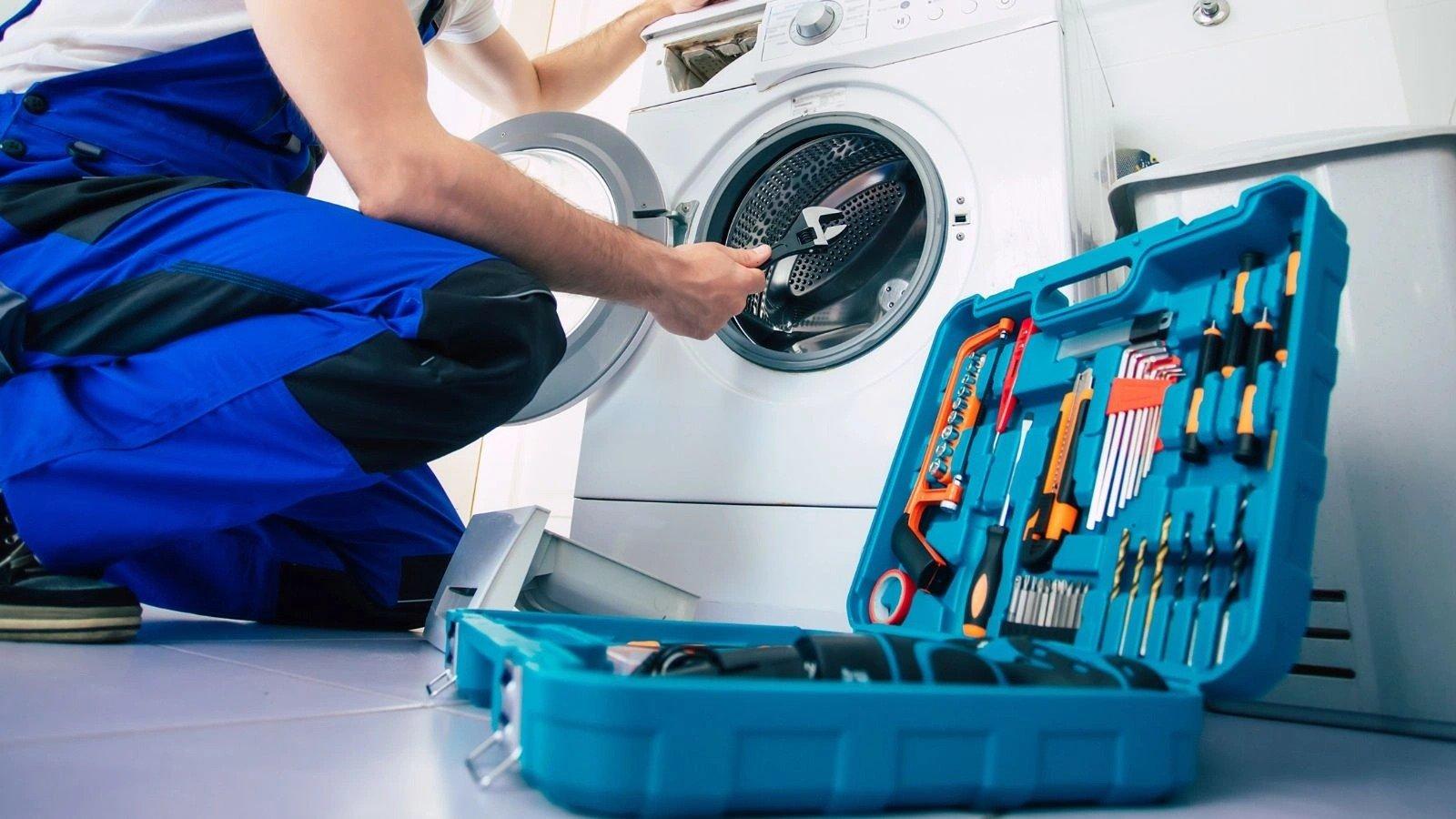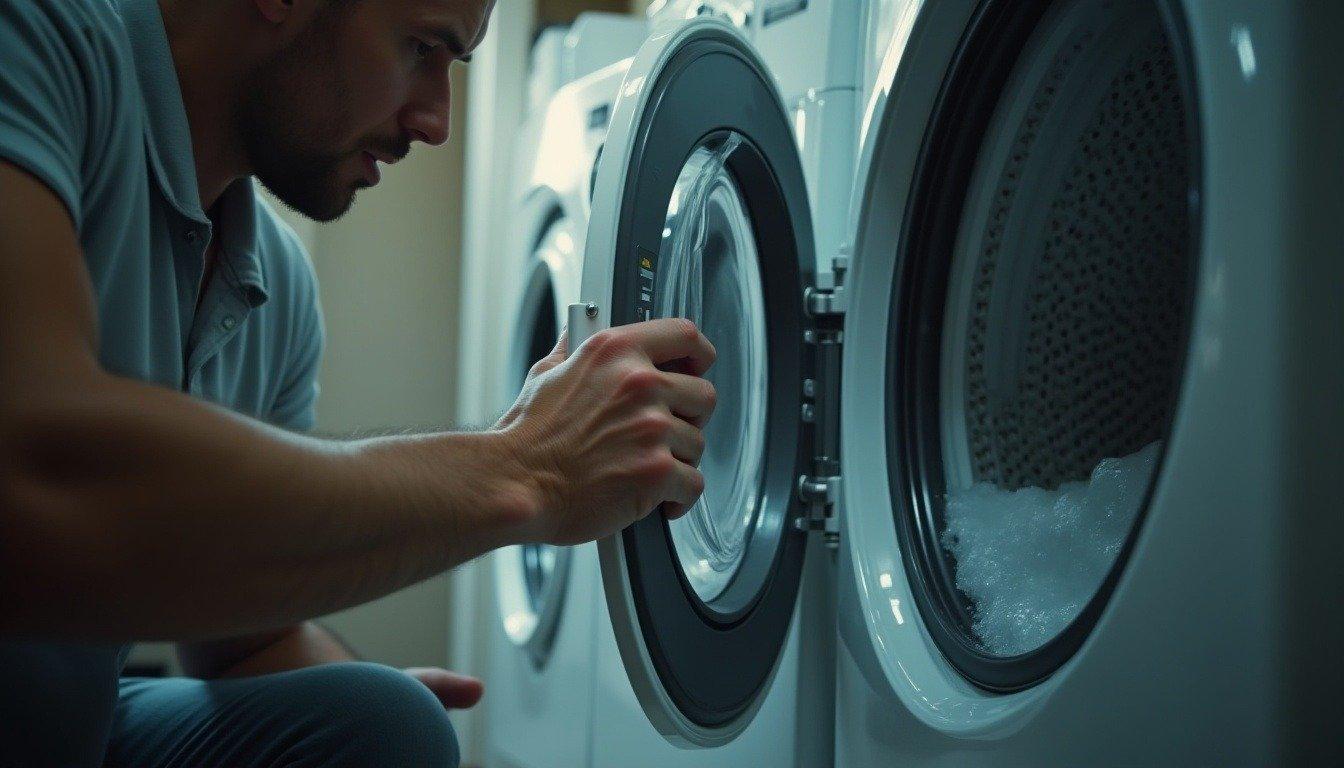How-To Guides
How to Fix a Washer Lid Switch with Filling Issues?
AZparts Team
Updated on July 11, 2025
7 min read
If you're facing issues with your washing machine not starting or completing a cycle, it may be due to a faulty lid switch. Learning how to fix washer lid switch can save you time and money on professional repairs. The lid switch is an essential safety feature that prevents the washer from running when the lid is open. In this comprehensive guide, AZParts will walk you through the steps to diagnose, test, and replace the lid switch in both top-load and front-load washers.

1. What is the Lid Switch?
The lid switch is an important safety mechanism in washing machines, particularly in top-load models. It prevents the machine from running when the lid is open, ensuring user safety. The switch detects whether the lid is closed and will disable the machine’s motor and agitator if it’s open.
In some washers, this switch is also referred to as the lid lock switch or lid lock assembly, particularly in models with a locking mechanism that keeps the lid tightly sealed during operation. The Lid Lock Switch and Lid Lock Assembly by AZParts are essential components designed to enhance the safety and functionality of your washing machine.
Lid Lock Switch
The Washer Lid Lock Switch from AZParts is an essential safety feature that ensures your washing machine cannot operate when the lid is open, preventing any potential accidents. Designed to activate the circuit only when the lid is securely closed, it ensures that the machine functions properly while keeping you and your family safe.
Crafted from high-quality, durable materials, this switch guarantees a long lifespan and reliable performance. Its simple installation process makes it an ideal replacement for a malfunctioning lid switch, providing peace of mind and enhancing the overall safety and efficiency of your washer. With AZParts' Lid Lock Switch, you can trust that your appliance will perform optimally, avoiding unnecessary disruptions or risks.
The switch of AZParts is made from durable materials (Source: AZParts)
Lid Lock Assembly
The Lid Lock Assembly from AZParts is a comprehensive locking mechanism that combines both the switch and the locking mechanism, ensuring the lid of your washer remains securely closed during operation. This assembly prevents the lid from being opened while the machine is running, providing added safety and preventing potential accidents. Made with durable materials, it ensures long-lasting performance and reliability.
The Lid Lock Assembly is compatible with a wide range of washers, including both top-load and front-load models from reputable brands such as Whirlpool, GE, and Frigidaire, making it a versatile and essential replacement part for any malfunctioning lid lock system. With AZParts’ Lid Lock Assembly, you can count on optimal safety and smooth operation for your washer.
The Lid Lock Assembly of AZParts is designed to provide enhanced safety (Source: AZParts)
2. Locating the Lid Switch in the Washing Machine
The location of the lid switch depends on the type of washing machine you have:
- Top-Load Washers: In most top-load washers, the lid switch is located near the hinge on the underside of the lid. It's typically mounted inside the cabinet and is connected to the control panel.
- Front-Load Washers: For front-load washers, the lid switch or lock mechanism is often located on the door frame. It engages with a striker on the door to prevent the washer from operating if the door isn’t securely closed.
The location of the lid switch depends on the type of washing machine (Source: AZParts)
3. How to Access, Remove, and Inspect the Washer Lid Switch?
3.1. For Top-Load Washer
- Step 1: Unplug the Washer: Before you begin working on your washing machine, ensure it is unplugged to avoid electrical shocks.
- Step 2: Remove the Control Panel: To access the lid switch, you may need to remove the control panel. Use a flathead screwdriver or putty knife to release the clips holding the control panel in place. Once free, gently lift the panel to expose the switch wiring.
- Step 3: Disconnect the Lid Switch Wiring: You’ll notice a wiring harness connected to the lid switch. Carefully disconnect the harness to remove the lid switch.
- Step 4: Remove the Mounting Screws: Look for screws or bolts that secure the switch in place. Use a screwdriver to remove these fasteners.
- Step 5: Inspect the Switch: Once the switch is free, visually inspect it for any signs of wear, corrosion, or physical damage. If the switch looks intact, test it for continuity using a multimeter.
Access, Remove, and Inspect for Top-Load Washer (Source: Freepik)
3.2. For Front-Load Washer
- Step 1: Unplug the Washer: Always ensure the machine is disconnected from power before starting repairs.
- Step 2: Access the Lock Assembly: For front-load washers, the lid lock assembly is located on the door frame. You may need to remove the top or front panel to access it, depending on your model.
- Step 3: Disconnect Wiring: Disconnect the wire harness attached to the lid lock assembly. Be sure to take note of the connections for reassembly.
- Step 4: Remove the Assembly: Using a screwdriver, remove the screws securing the lid lock assembly. Once it’s free, inspect it for any visible issues.
- Step 5: Test the Assembly: You can test the assembly with a multimeter to see if it’s functioning properly.
Access, Remove, and Inspect for Front-Load Washer (Source: AZParts)
3.3. Other Lid Switch Types
Some machines use different lid switch configurations, such as a mechanical switch that physically pushes against a latch. Always refer to your washing machine’s manual for specific instructions for your model.
4. How to Test the Lid Switch?
Testing the lid switch is a crucial step to determine whether it’s faulty. Here’s how you can do it:
Step 1: Set Multimeter to Ohms: Set your multimeter to measure resistance (ohms) to test the continuity of the lid switch.
Step 2: Test Continuity: Place the multimeter probes on the two terminals of the lid switch:
- When the Lid is Closed: The switch should show continuity (0 ohms), meaning it’s working as intended.
- When the Lid is Open: The switch should show no continuity (infinite resistance), indicating the switch is off.
Step 3: Interpret Results: If you get no continuity when the lid is closed, or continuity when the lid is open, the lid switch is faulty and needs replacement.
Testing the lid switch is a crucial step (Source: AZParts)
5. How to Install a New Lid Switch?
If testing shows that your lid switch is defective, here’s how to replace it:
5.1. For Top-Load Washer
- Step 1: Insert the New Switch: Place the new lid switch in the position where the old one was located.
- Step 2: Reconnect the Wiring: Plug the wiring harness into the new switch.
- Step 3: Secure the Switch: Reattach the mounting screws or bolts that secure the switch.
- Step 4: Reassemble the Washer: Reinstall the control panel and any parts that were removed to access the switch.
- Step 5: Test the Washer: Close the lid and plug in the machine. Run a short cycle to ensure that the switch is working correctly.
5.2. For Front-Load Washer
- Step 1: Install the New Lock Assembly: Position the new lid lock assembly and secure it with the screws.
- Step 2: Reconnect the Wiring: Reconnect all the electrical connectors to the new assembly.
- Step 3: Reassemble the Washer: Reinstall the front or top panel, ensuring everything is back in place.
- Step 4: Test the Door Lock: Close the door and start a cycle to verify that the lid lock assembly is working as expected.
Ways to install a new lid switch (Source: AZParts)
In summary, learning how to fix a washer lid switch is a great skill to have when your washer is experiencing issues like not starting or completing a cycle. By following the steps in this guide, you can repair the lid switch in both top-load and front-load washers, restoring your washing machine to full functionality. Always remember to prioritize safety by unplugging the machine before working on it, and if you are unsure of the repair process, consider seeking help from a professional technician.
A malfunctioning lid switch is a common cause of such problems, but it can be easily tested and replaced with the right tools and knowledge. AZParts offers high-quality Lid Lock Switch, Lid Lock Assembly products, and other washer parts designed to improve the safety and functionality of your washing machine, ensuring that your washer operates smoothly and securely.
Contact Information:
- 8 The Green, Ste A, Dover, Delaware 19901-3618, United States
- support@azparts.com
Washer
Further Reading
Further Reading





_1748341252.jpg&w=3840&q=75)